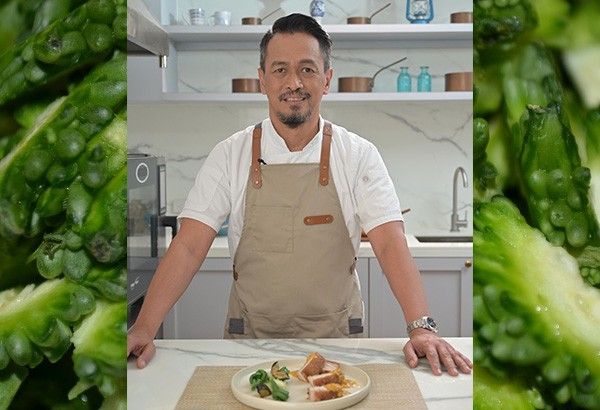How to take bitterness out of ampalaya: Filipino chefs share amazing techniques

MANILA, Philippines — Cooking Ginisang Ampalaya?
It is your favorite dish, but you don’t want the ampalaya (bittergourd) to be too bitter. You do not know exactly what to do because when you cook this dish, the bitterness somehow depends on the ampalaya that you have.
Asked some chefs what they do, and these are their responses:
Sau Del Rosario
Café Fleur / Sawsaw
Make sure you scrape off the white membrane very well.
Then you need to “cure” or brine the ampalaya with water with rock salt for at least 10 minutes, and drain thoroughly. Then cook it.
Decker Gokioco
White Flower Tea House
After slicing the ampalaya, soak it in water with rock salt, then squeeze out the juices. The hard part is that you have to taste it raw. If it is still too bitter to your taste, then give it another round of soaking with rock salt.
I usually add oyster sauce in our ginisa for more flavor, or we add ground meat.
Jam Melchor
Philippine Culinary Heritage Movement
I do it like my lola taught me. After cutting the ampalaya, add coarse salt and pour hot water into it. Make sure to shock it in cold water after to retain its color and crunch.
We usually sauté it with paro (shrimps in Kapampangan). We clean the medium-sized shrimps by deveining and setting the head aside. Using almires, we crush the heads and add its juice to the sangkutsa: garlic, onion, and tomato.
Lastly, we don’t overcook the ampalaya. I like to add egg yolks to it, most especially if I have excess egg yolks from my galantine. Egg yolks will make it more malinamnam on top of the juice from the shrimp heads.
Rafael Jardeleza Jr.
Author, "Flavors of Iloilo"
Salt the ampalaya, then rub it and squeeze out the juice lightly so as not to mash the ampalaya. Then wash it with tap water and soak again in water with salt for another 20 minutes.
After soaking, wash and strain then put ampalaya in an ice bath until ready to cook.
Sauté garlic, onion and thinly sliced porkloin or pork belly (you may opt for no meat). Add water, and season with salt, pepper and fish paste. Simmer over low heat until pork is tender. Adjust fire to medium heat. Boil then gently fold in the ampalaya but keep the texture still crunchy or al dente but not raw. Add beaten egg and fold into the ampalaya. Do not overcook the ampalaya so it will not produce a bitter taste.
The bitterness of the ampalaya will not be totally removed, but the process will lessen the strong bitter taste.
Also, choose less wrinkled ampalaya. Make sure it is half-ripe and firm. Don’t buy the short, dark green and very wrinkly ampalaya.
Toto Erfe
Tito Toto’s
Uh-oh. Not a fan of ampalaya. But I like it bitter when I eat it. I usually crush it in salt, rinse it well, and cook it into an omelette.
Gino Gonzalez
Gino’s Gourmet Kitchen
Massage it with salt then running water two to three times.
I usually put roasted tausi and lots of aromatics, like onion, ginger and garlic.
Patis is the key!
Llena Tan
San Miguel Pure Foods Culinary Center
To remove the bitterness, I carefully take out the seeds then soak the sliced ampalaya in brine solution for about 15 minutes. Squeeze out the juice before cooking.
A really good ginisang ampalaya should be sautéed in rendered pork fat, onion, garlic, tomato and good alamang or use hibe or fresh suahe. Instead of water, use chicken stock. Don’t overcook ampalaya so there is still some crunch and the bright green color is retained. Add some malunggay leaves if desired. When indulgent, top with some chicharon or Purefoods Ready to Eat Chicharon Bulaklak.
Theodore Day Salonga
Ted's Kitchen
I learned it from my lola: Rub ampalaya, including the core, with salt. Leave it for 2 to 3 minutes, then squeeze a little and wash. Another way is to soak it in water with salt for 10 to 15 minutes.
To make the best Ginisang Ampalaya, saute garlic in oil. Add onion and tomatoes. Stir in sliced ampalaya and season with patis!
RELATED: How to perfectly boil egg: 7 chefs share their secrets



















